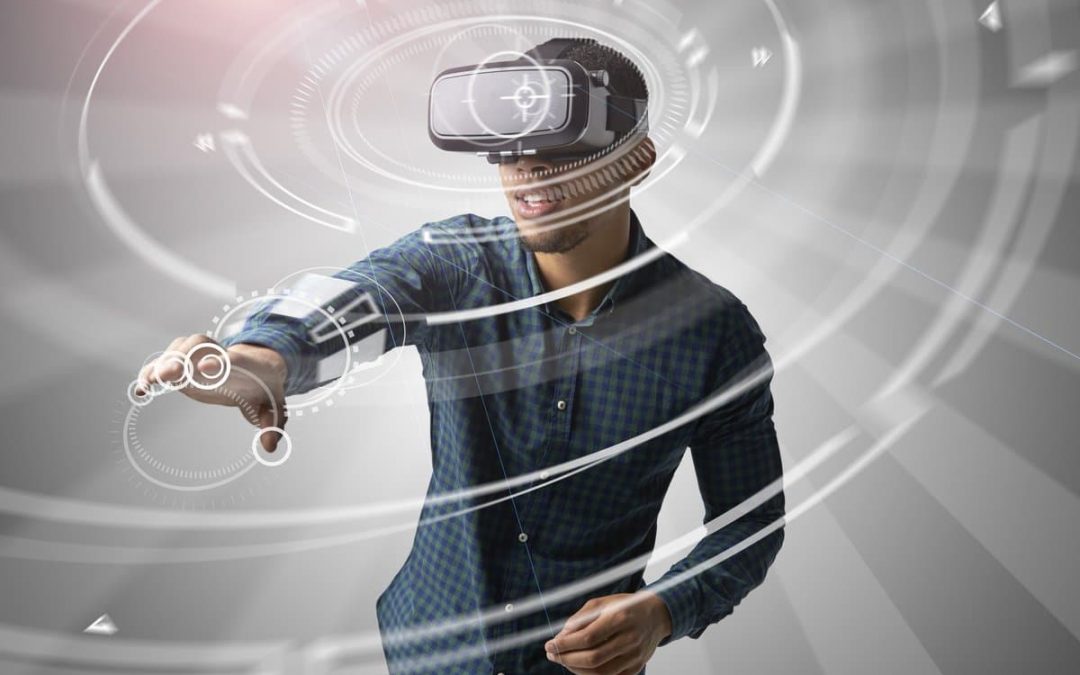Simulating real vision inside a virtual space has been a dream for many people, more specifically to gamers. As a gamer, I always wanted to experience what it would be like to experience a virtual space first hand and be able to interact with objects while viewing the world from the perspective of my character. This was the idea behind first-person games, where you, the player, see the world from your character’s perspective. VR headsets were a giant and important leap and it was able to accurately portray a true virtual experience. True virtual reality headsets such as the Oculus Rift, PlayStation VR and Vive have 2 screens, one for each eye.
Because our eyes are located on different sides, our brains merges these two perspectives into one and forms an effect known as stereopsis, or depth perception. Both of our eyes working together helps us to easily distinguish between what is closer to us and what is further away and it is exactly how virtual reality headsets work. Each screen in front of the eye views the same scene from slightly different angles. Our brain combines the 2 perspectives and results in depth to the scene.
Virtual Reality Can Benefit Different Gaming Genres
Many types of games have started to adopt VR with the most anticipated being Half-Life Alyx, a game that will surely have a huge impact on VR gaming. Even though VR is still a niche market, casino companies are also implementing it into their game. Some of the better candidates for a Vr casino are table games such as roulette. While there are a few casino platforms that have implemented VR, it remains to be seen how many more will implement it. Since slot games are the most popular form of casino games either in land-based or online slots, a VR version will probably be something that most casinos will implement.
Field of View and Frame Rate
The field of view plays an important role when trying to simulate vision inside a virtual space. There are many stories regarding the low field of view in video games, where many gamers experienced motion sickness due to the limited vision of a low field of view. Many video games designed for consoles come with a low field of view by default. There can be many reasons for this. Some think that a lower field of view makes the game and the scenes more cinematic and also because the player is further away from the screen when playing on a console. This low field of view becomes a problem when the player is closer to the screen because there is a disconnect between the space on the screen and what the player sees.
The total field of view of humans is about 180 degrees. While our peripheral vision may not be as sharp, it does grant us more spatial awareness. Most of the games rendered on console come with a 60-degree field of view. Many of them that were released after 2000 were made primarily for consoles and later ported on PC. Of the many companies that do this, they develop an option for PC users to adjust their preferred field of view. The option is usually a slider that the player can adjust from 60 degrees for to 100 and some times, even more, depending on if the game supports it.
However, other companies do not think much about this option and port the game without it, making it difficult for some people to play the game. Both the Rift and Vive offer a 110 field of view which is acceptable for a comfortable experience. Having a screen for each eye is important for the perception of depth and to make the experience more comfortable, a minimum of 60 frames per second is recommended. Anything less can also lead to motion sickness. The challenge that VR developers are facing is designing a headset that offers full 180 degrees FOV which is ideal to simulate real-world vision.
Demanding Hardware
The topic of frame rate in VR is as much debate as in regular video games. To have the best experience in regular PC and console games, a framerate of 60 fps is ideal for sharp responses. Anything below 60 fps tends to lead to motion sickness disorientation and headaches, especially for VR because it tricks the brain into thinking that virtual space is the real world, experiencing stutters in real life is not something that the brain our brains are used to.
For VR to work, it requires several devices, the headset itself and the device (PC, console, smartphone) to create the environment. Viewing the virtual space is all well and good. The next element is interactivity such as movement. The way that you can view the surrounding space inside a VR headset is through a camera that tracks the head movement. Some headsets use a laser to track the eye movement so that users can have a deeper field of view. Unfortunately, when it comes to triple AAA gaming experiences, a decent mid to high-range system is required to properly run the games without issues. This may be the major downside of gaming with VR headsets.
Each VR headset comes with its own system requirements. The Oculus Rift comes in many different versions as well as the HTC Vive and it is important to choose the one that fits your system and can comfortably run it. The main component that is the most important when it comes to VR is the GPU, which does most of the head work in gaming and the type of card that is needed depends mostly on the resolution of the headset. For example, a popular mid-range GPU used by many gamers is the GTX 1060 from Nvidia, a great GPU capable of running many of the basic VR games and is the minimum GPU requirement for Oculus Rift, which is the most common VR headset used by PC gamers.
